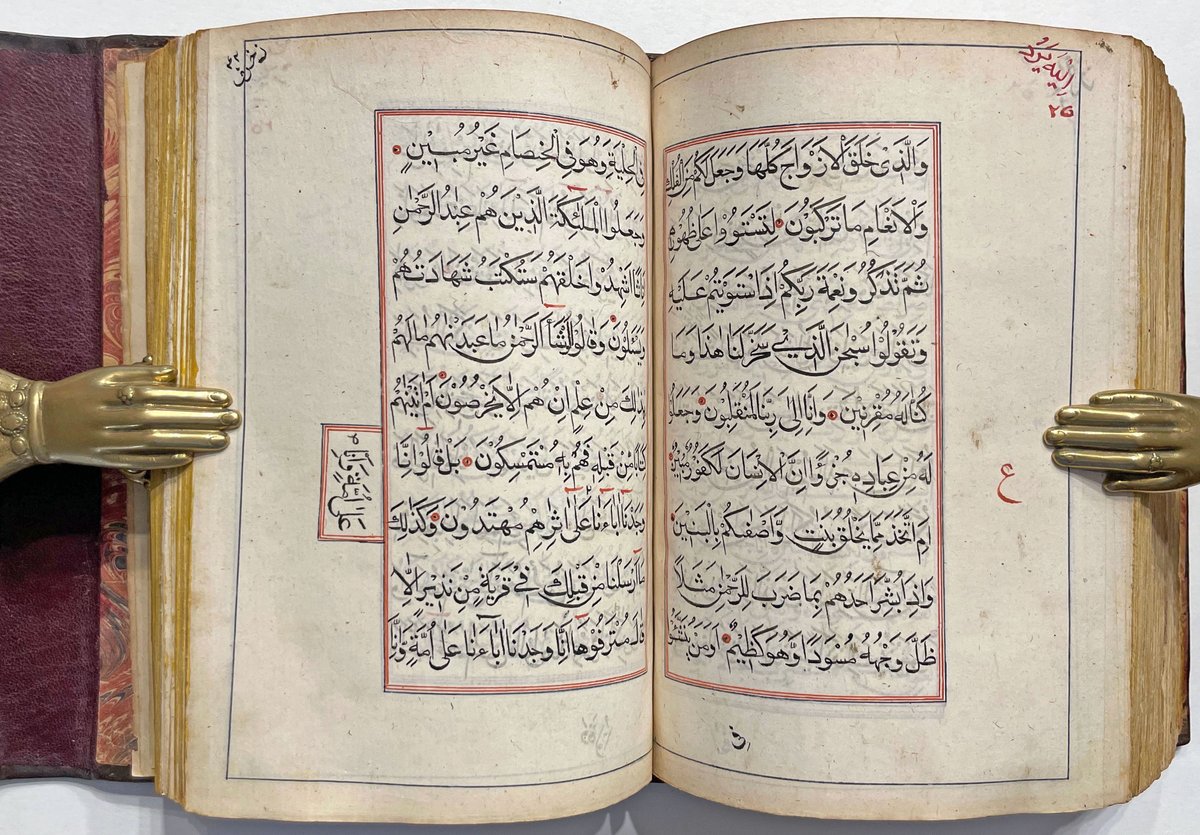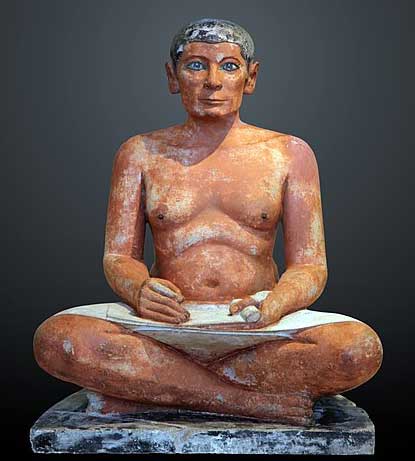A large and luxurious finely-bound 18th century Qur’an, written in black and red in very fine naskhi in an austere, entirely undecorated style, described by Maggs in 1939 as "in the style peculiar to the islands of the Indian Ocean." Possibly originating from the Maldives. 1/ 

The binding is 18th century red Morocco with a fore-edge flap, very elaborately gilt-tooled with floral designs. The design shows some non-Islamic influences, and may have been executed in a workshop in southern India, possibly one attached to a mission press. 2/ 

It's a massive tome, 650 folios, on good quality burnished unwatermarked paper, almost certainly of Indian manufacture. The essentially complete absence of any decoration throughout is unusual and very striking. 3/ 





This Quran comes from the collection of the art dealer and bibliophile Vincent Van Gogh (1866-1911), the cousin of the like-named artist. The bookplate was engraved by the Dutch artist Marius Bauer (1867-1932). 4/ 



The Qur'an was Lot 12 when Van Gogh's impressive library was sold in 1918, after his death.
Catalogue de la bibliothèque privée de feu M. Vincent Van Gogh à Amsterdam […] - Vente des 15 et 16 janvier 1918. 5/
Catalogue de la bibliothèque privée de feu M. Vincent Van Gogh à Amsterdam […] - Vente des 15 et 16 janvier 1918. 5/

Later this Qur'an passed through the hands of @MaggsBros, appearing in both their 1939 and 1940 catalogues. 6/ 

It's interesting to speculate on exactly *which* Indian Ocean islands Maggs were referring to in 1939/40. The style is not typical of the Zanzibar coast, nor of the Comoros. It's not Javanese, and unlikely to be from Ceylon. The Maldives are I think the most likely candidate. 7/ 

You can view other Maldives Qurans here. There's no close match to the handwritting, but few Maldives mss survive from the 18th century. They are nearly all characterized by the use of black and red ink, and an almost complete absence of any decoration. 8/
maldivesheritage.oxcis.ac.uk/index.php/manu…
maldivesheritage.oxcis.ac.uk/index.php/manu…
Two views of the elaborate and heavily tooled binding. The binding is roughly contemporary with the manuscript, certainly 18th century or first half of the 19th century, but seems to betray some Western influence, which makes me think a South Indian origin is most likely. 9/ 



The Maldives were controlled by the Dutch in the 18C until they were expelled by the British in 1796. If the Qur'an left the islands then it would explain both its excellent state of preservation & its later appearance on the Amsterdam market, where Van Gogh likely bought it. 10/ 



You can read a bit more about the art dealer Vincent van Gogh who owned this Qur'an in the thread here: 11/
https://twitter.com/incunabula/status/1469333050043641869
Here are 4 more page spreads from this Indian Ocean islands Qur'an, showing the beautiful Naskh script in black and red, and the distinctive absence of any ornamentation or decoration, beyond the ruled lines framing the written area of each page. 12/ 







• • •
Missing some Tweet in this thread? You can try to
force a refresh


















